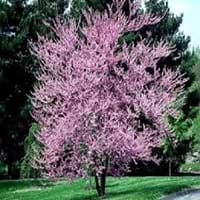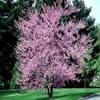Life Span
Perennial
Perennial
Type
Flowering Plants, Grass, Shrubs
Tree
Origin
Central America, North America
Northeastern United States, Mid-Atlantic United States, Southeastern United States, North-Central United States, Central United States, South-Central United States, Canada
Types
Not Available
Not Available
Habitat
Temperate Regions, tropical environments
Alpine Meadows, shaded woods
USDA Hardiness Zone
7-10
4-9
AHS Heat Zone
Not Available
9-5
Sunset Zone
Not Available
1a, 1b, 2a, 2b, 3a, 3b, 7, 8, 9, 10, 11, 12, 13, 14, 15, 16, 17, 18, 19, 20
Habit
Upright/Erect
Oval or Rounded
Flower Color
Pink, Red, White, Yellow
Red, Purple, Violet
Flower Color Modifier
Bicolor
Bicolor
Fruit Color
Black, Green
Brown, Chocolate
Leaf Color in Spring
Green, Dark Green
Purple, Plum
Leaf Color in Summer
Dark Green
Green, Dark Green
Leaf Color in Fall
Yellow green
Yellow, Yellow green
Leaf Color in Winter
Dark Green
Not Available
Leaf Shape
Egg-shaped
Heart-shaped
Plant Season
Fall, Late Summer, Mid Summer
Spring, Summer, Fall
Sunlight
Full Sun
Full Sun, Partial Sun
Type of Soil
Loam, Sand
Clay, Loam, Sand
The pH of Soil
Neutral, Slightly Acidic, Slightly Alkaline
Acidic, Neutral, Alkaline
Soil Drainage
Well drained
Well drained
Bloom Time
Early Fall, Late Summer, Mid Summer
Early Spring, Spring, Late Spring
Tolerances
Drought
Drought
Where to Plant?
Container, Ground, Pot
Ground
How to Plant?
Seedlings
Cuttings
Plant Maintenance
Low
Medium
Watering Requirements
Do not water excessively
Keep the ground moist but not water-logged
In Summer
Lots of watering
Lots of watering
In Spring
Moderate
Moderate
In Winter
Average Water
Average Water
Soil pH
Neutral, Slightly Acidic, Slightly Alkaline
Acidic, Neutral, Alkaline
Soil Type
Loam, Sand
Clay, Loam, Sand
Soil Drainage Capacity
Well drained
Well drained
Sun Exposure
Full Sun
Full Sun, Partial Sun
Pruning
Cut back old stems to the ground
Prune to stimulate growth, Remove damaged leaves, Remove dead branches, Remove dead leaves
Fertilizers
as it is a flowering plant, use high phosphorous content fertilizer
All-Purpose Liquid Fertilizer
Pests and Diseases
Aphids, Slugs
Bacterial Canker, Verticillium Wilt
Plant Tolerance
Drought
Drought
Flower Petal Number
Single
Single
Foliage Texture
Coarse
Medium
Foliage Sheen
Matte
Glossy
Attracts
Bees, Butterflies
Birds
Allergy
Not Available
Unknown
Aesthetic Uses
Showy Purposes, small hedge
Beautification, Formal Garden, Ground Cover, Showy Purposes
Beauty Benefits
Making cosmetics
Not Available
Environmental Uses
Not Available
Air purification, Food for animals, Food for birds, Nesting sites for birds
Medicinal Uses
anti-inflammatory, Aphrodisiac, Diuretic, Purgative, Vulnerary
Unknown
Part of Plant Used
Flowers, Leaves
Not Applicable
Other Uses
Edible dye
Beneficial species for attracting pollinators, Used as Ornamental plant
Used As Indoor Plant
No
No
Used As Outdoor Plant
Yes
Yes
Garden Design
Container, Edging, Feature Plant, Foundation, Wildflower
Feature Plant, Foundation, Mixed Border, Shade Trees
Botanical Name
Mirabilis jalapa
CERCIS canadensis 'Forest Pansy'
Common Name
marvel of peru, four o'clock flower
Eastern Redbud, Forest Pansy Redbud
In Hindi
Mirabilis jalapa
Forest Pansy Redbud
In German
Wunderblume
Forest Pansy Redbud
In French
Belle-de-nuit
gainier du Canada
In Spanish
Dondiego de noche
Cercis canadensis
In Greek
mirabilis Jalapa
Forest Pansy Redbud
In Portuguese
Maravilha
Forest Pansy Redbud
In Polish
mirabilis Jalapa
Judaszowiec kanadyjski
In Latin
mirabilis Ja-
Forest Pansy Redbud
Phylum
Magnoliophyta
Spermatophyta
Class
Magnoliopsida
Magnoliopsida
Order
Caryophyllales
Fabales
Family
Nyctaginaceae
Fabaceae
Clade
Angiosperms, Core eudicots, Eudicots
Angiosperms, Eudicots, Rosids
Tribe
Not Available
Not Available
Subfamily
Not Available
Not Available
Number of Species
Not Available
Not Available
Season and Care of Mirabilis Jalapa and Forest Pansy Redbud
Season and care of Mirabilis Jalapa and Forest Pansy Redbud is important to know. While considering everything about Mirabilis Jalapa and Forest Pansy Redbud Care, growing season is an essential factor. Mirabilis Jalapa season is Fall, Late Summer and Mid Summer and Forest Pansy Redbud season is Fall, Late Summer and Mid Summer. The type of soil for Mirabilis Jalapa is Loam, Sand and for Forest Pansy Redbud is Clay, Loam, Sand while the PH of soil for Mirabilis Jalapa is Neutral, Slightly Acidic, Slightly Alkaline and for Forest Pansy Redbud is Acidic, Neutral, Alkaline.
Mirabilis Jalapa and Forest Pansy Redbud Physical Information
Mirabilis Jalapa and Forest Pansy Redbud physical information is very important for comparison. Mirabilis Jalapa height is 60.00 cm and width 50.00 cm whereas Forest Pansy Redbud height is 760.00 cm and width 760.00 cm. The color specification of Mirabilis Jalapa and Forest Pansy Redbud are as follows:
Mirabilis Jalapa flower color: Pink, Red, White and Yellow
Mirabilis Jalapa leaf color: Green, Dark Green
Forest Pansy Redbud flower color: Red, Purple and Violet
- Forest Pansy Redbud leaf color: Purple and Plum
Care of Mirabilis Jalapa and Forest Pansy Redbud
Care of Mirabilis Jalapa and Forest Pansy Redbud include pruning, fertilizers, watering etc. Mirabilis Jalapa pruning is done Cut back old stems to the ground and Forest Pansy Redbud pruning is done Prune to stimulate growth, Remove damaged leaves, Remove dead branches and Remove dead leaves. In summer Mirabilis Jalapa needs Lots of watering and in winter, it needs Average Water. Whereas, in summer Forest Pansy Redbud needs Lots of watering and in winter, it needs Average Water.





